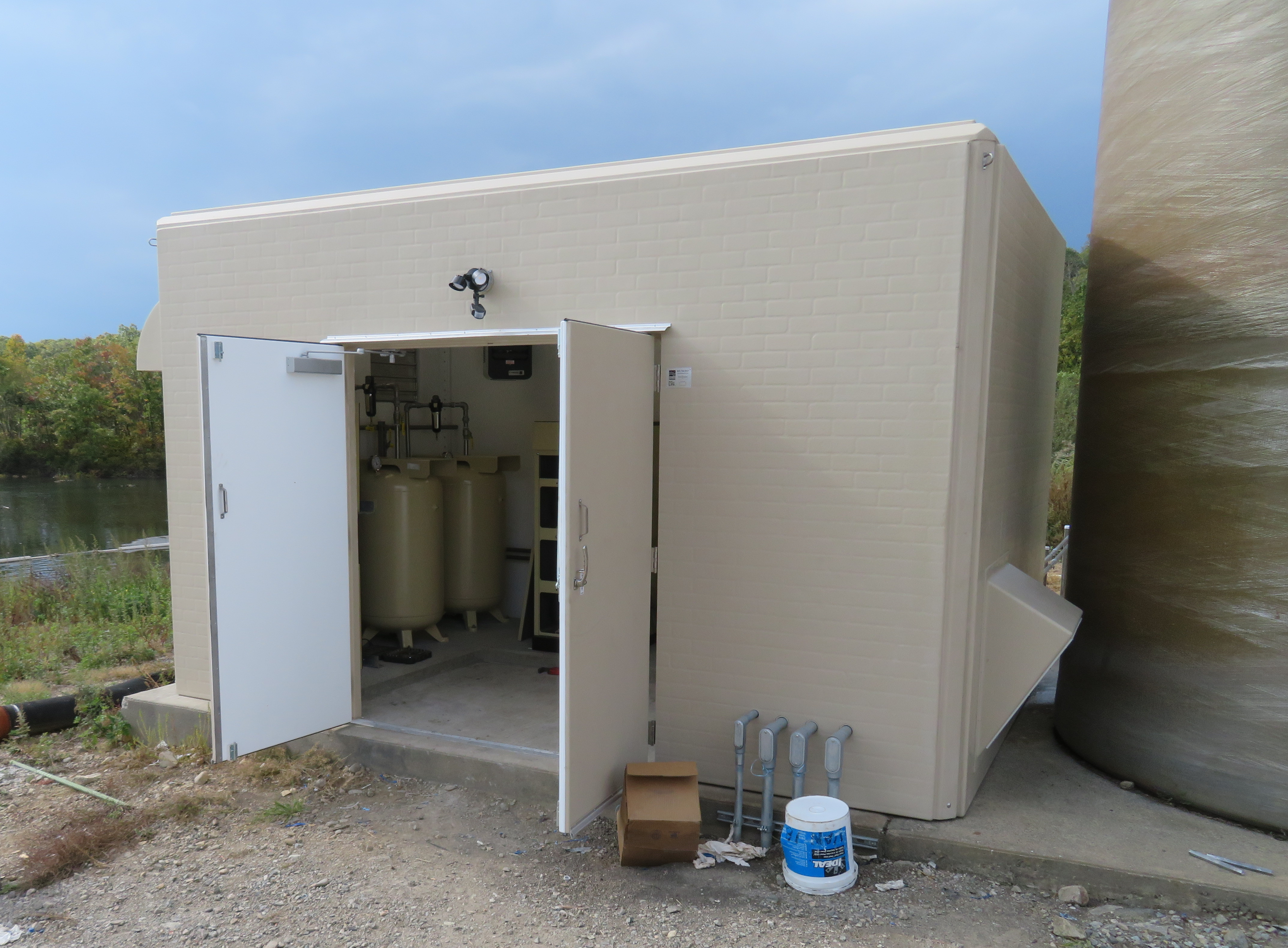Fiberglass Buildings for Water Treatment FacilityCase Study
Pump House Shelter and Compressor Building
 THE PROJECT
THE PROJECT
The Wanaque Reservoir was created by the construction of the Raymond Dam across the Wanaque River in Wanaque Borough, Passaic County, N.J. Breaking ground in 1920, the first delivery of water through the 21-mile aqueduct occurred in March 1930. The reservoir can hold up to 29.6 billion gallons with a water surface area of 2,310 acres. Operated by the North Jersey District Water Supply Commission (NJDWSC), water from the Wanaque Reservoir helps to service NJDWSC’s 13 member municipalities.
The NJDWSC is currently in the process of upgrading its facilities at the Wanaque Reservoir. The Lagoon Decant Project includes two Shelter Works prefabricated fiberglass buildings. The smaller of the two shelters will be a pump house, the second will be a compressor building. Bob McIntyre of Stone Hill Contracting in Doylestown, PA explained that both shelters will be located at the residuals lagoon and protect equipment that is a part of the residuals process train at the water treatment facility. Due to their location, fiberglass was the chosen building material because of its high level of corrosion resistance and its ability to withstand water and humidity.
THE SHELTERS
The pump house protects the new triplex pump system that will replace the previous duplex system, and the control panels for the decant structure. Measuring 14’ x 14’ x 9’ the shelter includes a full electrical package with interior and exterior LED lighting, heater, and exhaust.
The second shelter protects the compressors that provide the air for the DAF (Dissolved Air Flotation) units that remove total suspended solids (TSS) and FOG (fats, oils, and grease) particles during the treatment process. This 10’ x 15’ x 9’ shelter has a fully customized electrical package including two load centers, a transformer, interior and exterior LED lighting, and a heater.
The State of New Jersey participates in an Interstate Compact for the construction of modular buildings which requires prefabricated buildings that enter the state to be IBC (International Building Code) compliant. The code requires these shelters to have wood in all four walls and roofs for the thermal barrier in order to achieve IBC compliance. The fiberglass buildings also have 4-1/2” Elfoam in their roofs and 2-1/2” foam in the walls to meet IECC (International Energy Conservation Code) standards, also required by the New Jersey state labeling process.
WORKING WITH SHELTER WORKS
Barbara Bendlin of Bendlin, Inc. is the manufacturer's rep for Shelter Works in Northern New Jersey. She has worked with McIntyre on several NJDWSC projects that have used Shelter Works fiberglass buildings. When asked how she feels about representing Shelter Works, Bendlin stated "If you are looking for a high-quality shelter look no further, this is it! Shelter Works is a class act company with a customer service that compares to no other.”
We posed a similar question to Bob McIntyre and he described his experience working with Shelter Works as “Excellent, they (Shelter Works) work with us every step of the way.”

